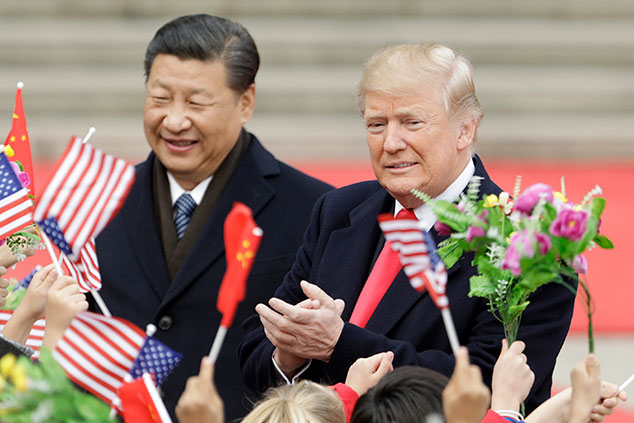
It is true we are witnessing two very different systems of government competing for global support, with two contrasting approaches to economic development and two clashing views of how international relations should be conducted. The US is concerned that the “Made in China” initiative is part of a plan to build a very strong industrial-military complex that will project Chinese power well beyond the South China Sea in opposition to the US. It has some legitimate concerns about technology theft, or the acquisition of technology by applying asymmetric power in commercial relations, that could have significance for weapons development and surveillance.
China is steadily building strong influence over Asian, Middle Eastern and African states through its “Belt and Road” initiative. Making apparently helpful and friendly investments in a range of developing economies will give China increased leverage over these governments. In many cases, it also secures direct control over crucial raw material deposits and transport infrastructure.
The US State Department and the Pentagon contain senior people who think this is a good time to seek to limit China’s acquisition of technology and to send a warning over China’s military and diplomatic expansion. Their wish to do this is intensified now there are clear signs of a Russia-China rapprochement. The joint Sino-Russian military exercises in Russia were designed to send a message to the world that there is an important countervailing power to the US, with a new era of collaboration between the old communist allies and competitors.
We see this new line up taking different sides to the US over Venezuela, where the US traditionally expects the world to accept its leadership in its own “backyard” of Latin America. Russia is also on the other side to the US in the Middle East, working with Iran and Syria.
This week there did seem to be more chance of progress, with more intense trade talks scheduled between senior representatives of the two presidents. We would expect China’s vice premier and the US trade representative to be charged with a duty to find a deal they can put to their bosses with a chance of success.
However, on the eve of the talks, the US decided to announce criminal charges against Huawei, the Chinese technology company. This may be necessary legal background to its case to extradite Meng Wanzhou, the chief financial officer of Huawei, from Canada where she is under strict bail surveillance. The US wants her to answer in person these general corporate allegations in a US court. It was, however, an unhelpful backdrop for the talks, with deep Chinese resentment at the attacks upon one of their leading technology companies.
If we look at the underlying interests of Xi and Trump, both men share a need to secure a trade deal and to move on. The Chinese economy has slowed more than the authorities there would like, and they now believe that part of the problem is trade disruption caused by tariffs and by some Western reluctance to do more business or welcome more investment from China.
On the US, side Trump, too, has conceded that the US slowdown and fall off in markets at the end of 2018 was made worse by the trade war, though he still blames the Federal Reserve and interest rates for much of the difficulty.
This implies the two decision-takers will want to find a way of striking a deal while each claiming a win. That means concessions on both sides on the things that matter to the other, though, given the imbalance of trade and the nature of the technology dispute, it will have to show a more visible win for the US for Trump to come on board.
Xi cannot afford to be seen to climb down and lose face, but he has already indicated a willingness to offer more intellectual property protection which requires some proof for the US that it will be enforced. He has also taken the sting out of arguments about the value of the Chinese currency, which used to be top of Trump’s agenda.
Trump will need to deal with his military and strategic advisers, who will urge him to challenge China more aggressively while the US is still clearly the more mobile and powerful military presence globally. I suspect that Mr Trump will in the end be governed by what he thinks the economic and market outcome will be rather than by the longer term strategic and military issues. He is now in the second half of his term as president, and will want to push further with economic growth and higher real wages as he examines his chances of a second term. The self-imposed deadline for the dispute is 1 March with US threats of more tariffs. There is a now a reasonable chance that the two will rediscover the art of the deal.
• Sir John Redwood is MP for Wokingham and chief global strategist for Charles Stanley.